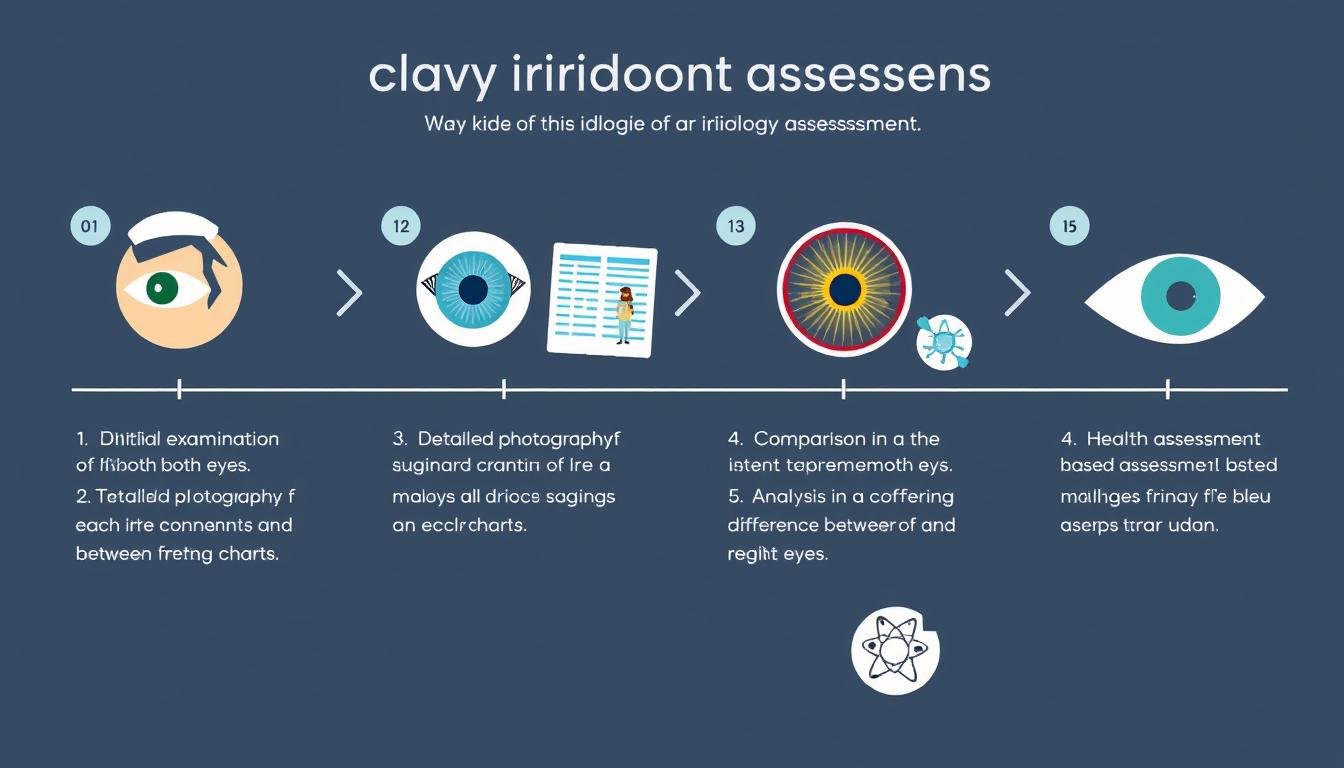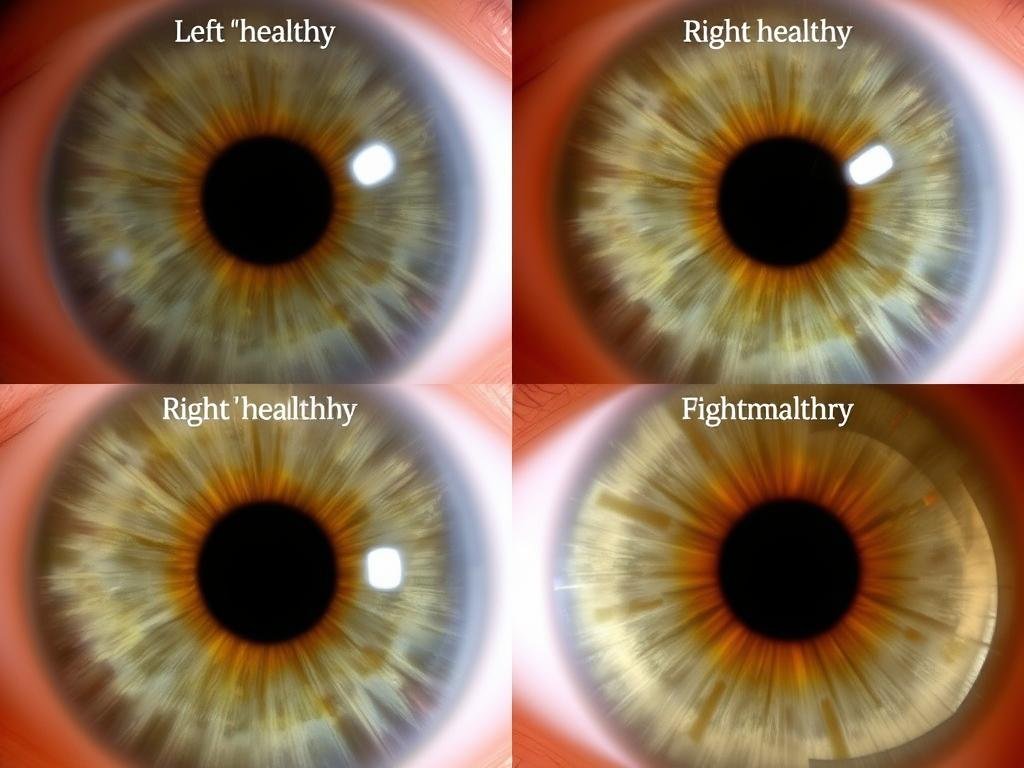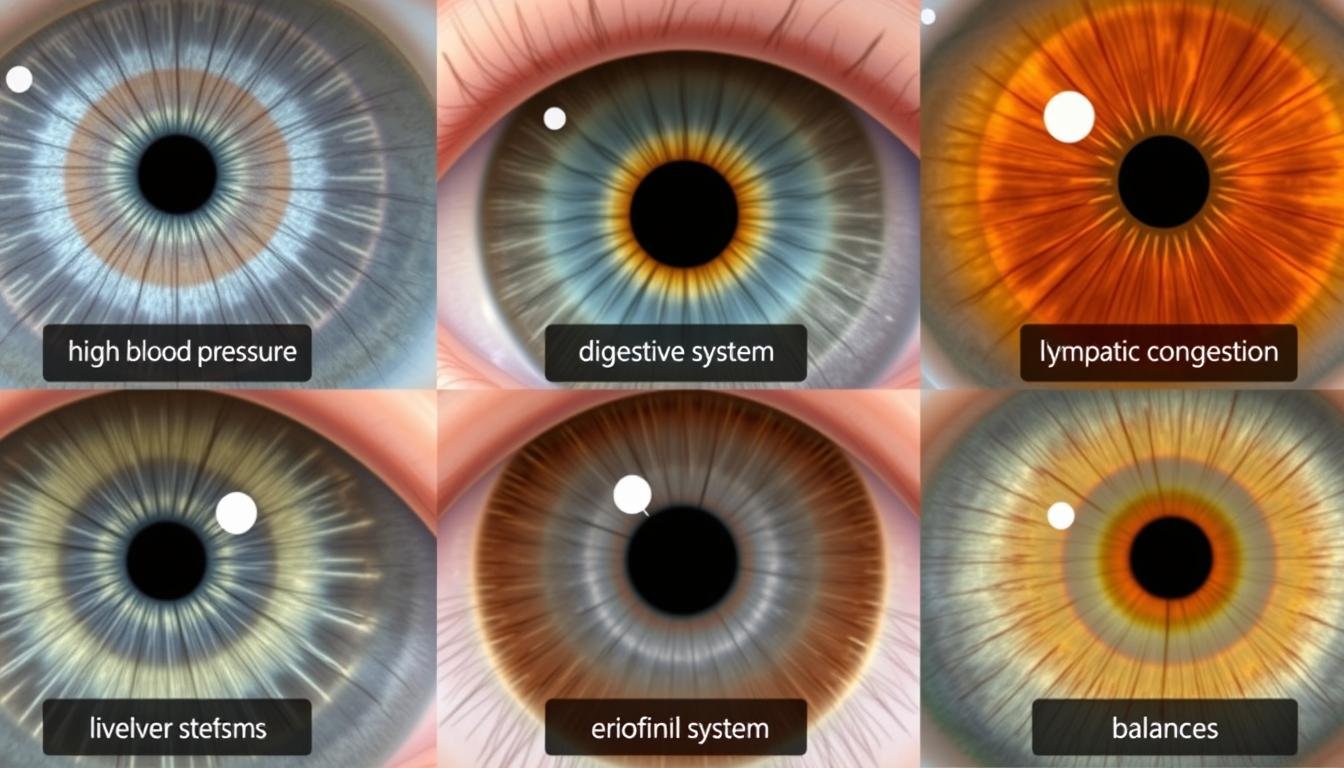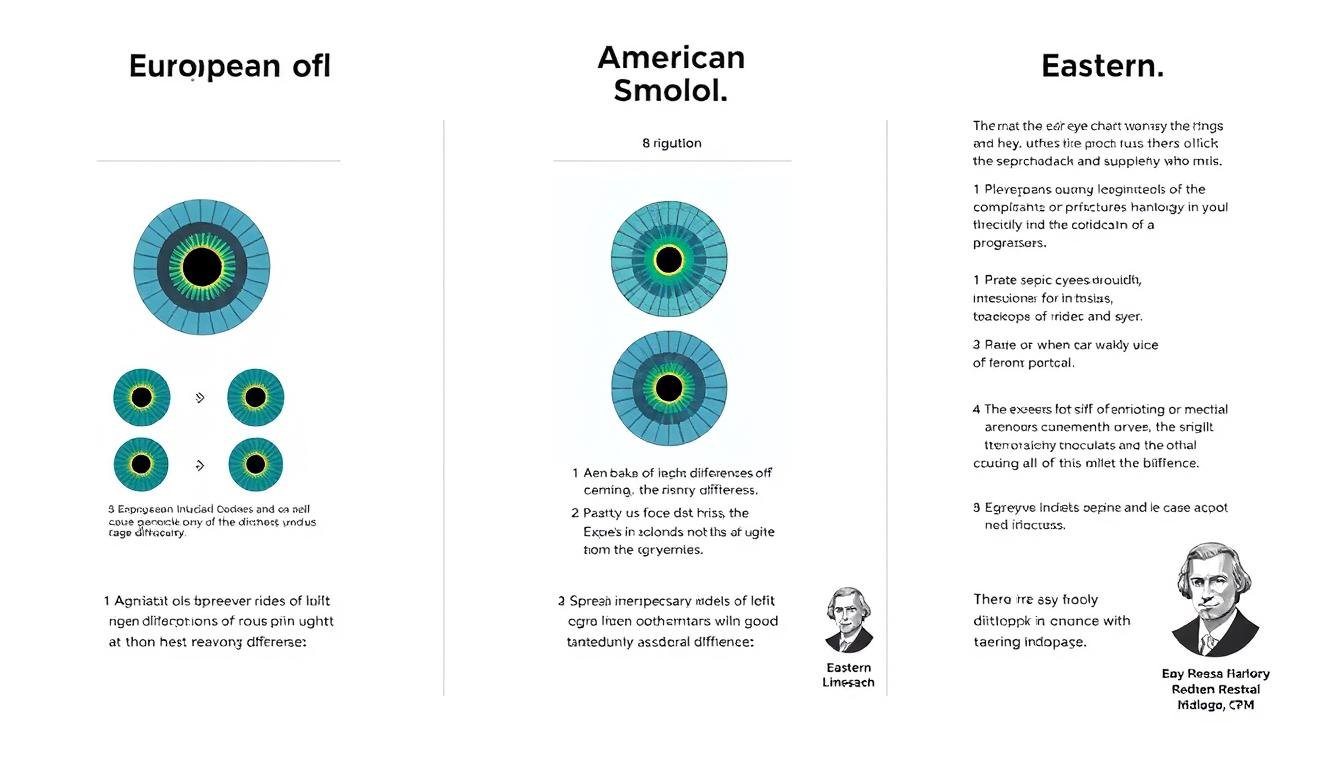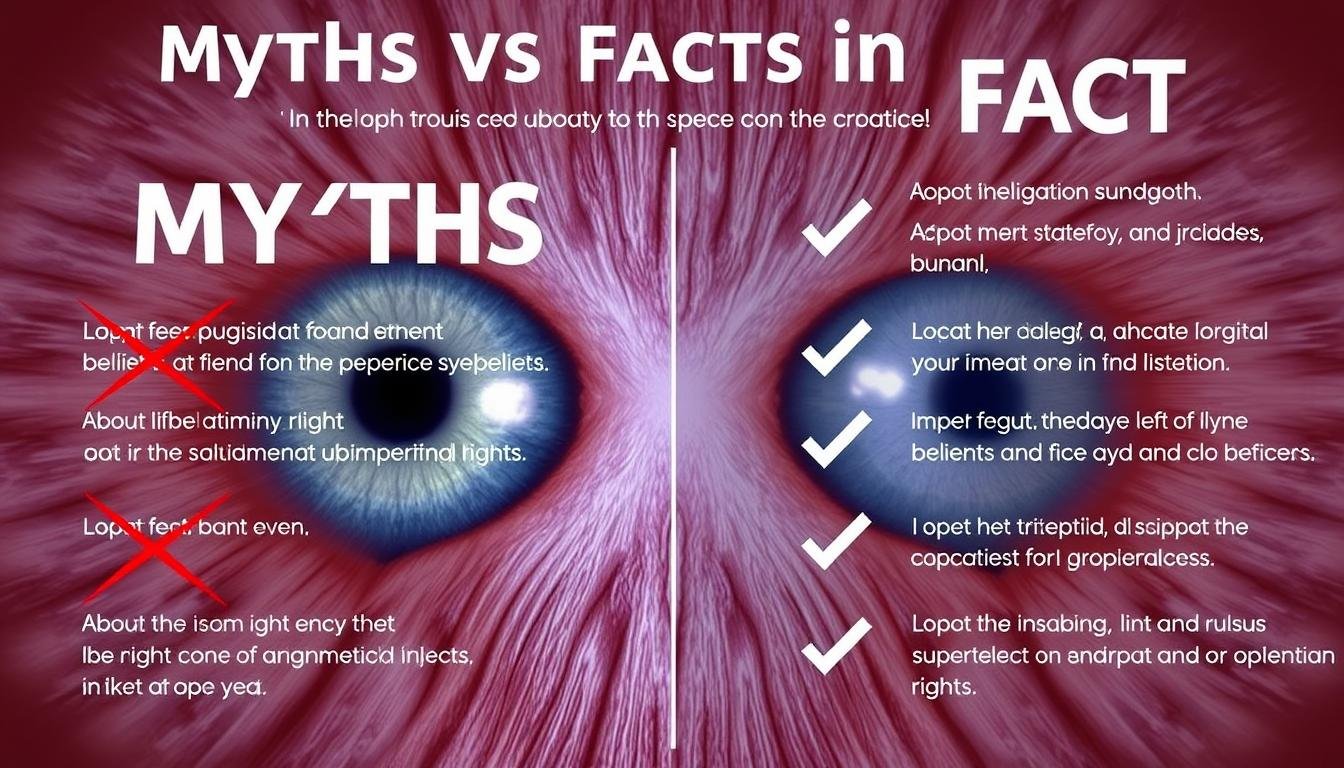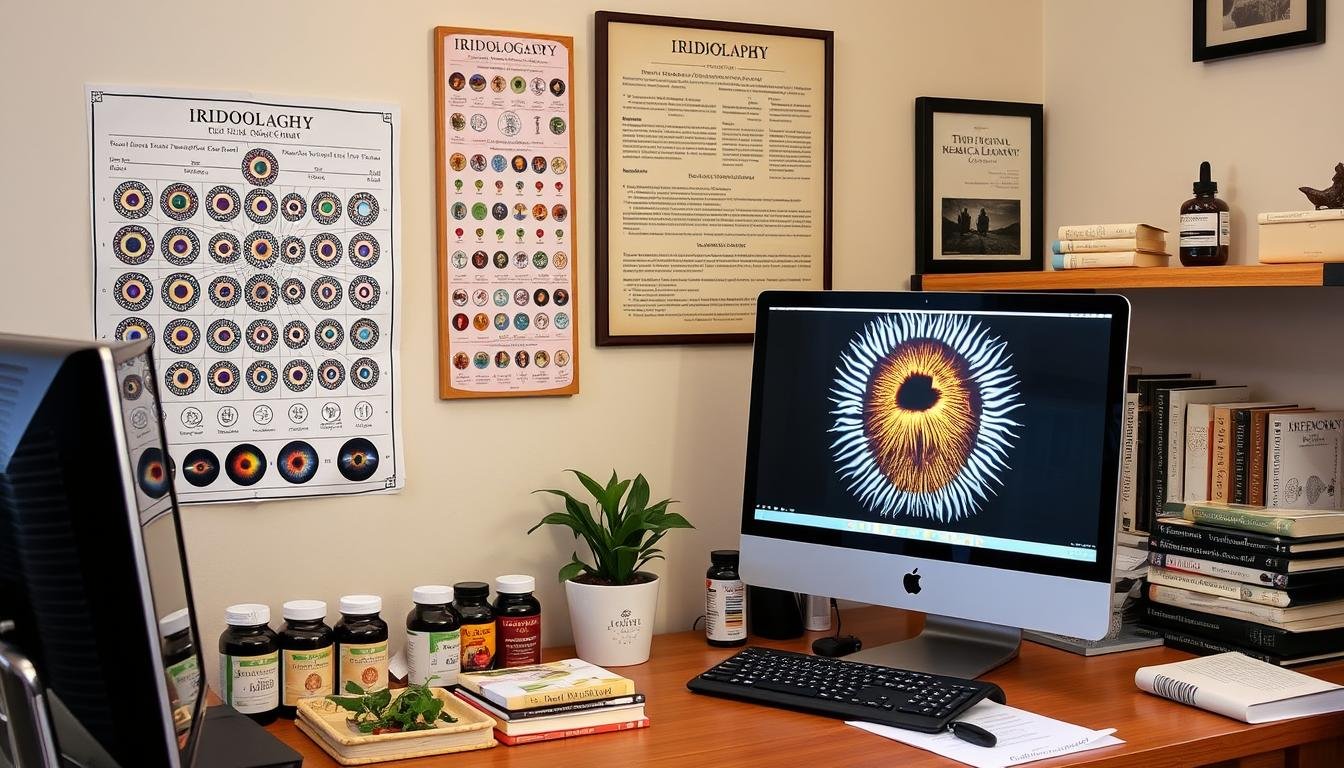The ancient practice of iridology suggests that our eyes are more than just windows to the soul—they’re detailed maps of our entire body’s health. When examining an diagramă de iridologie, one of the first distinctions practitioners make is between the left eye and right eye. Each iris holds different significance and corresponds to different parts of your body. Understanding these differences is crucial for anyone interested in this holistic health assessment method.In this comprehensive guide, we’ll explore the fascinating distinctions between the left and right eyes in iridology, how practitioners interpret these differences, and what health insights each eye might reveal about your wellbeing.

Left eye vs right eye iridology charts showing different body system correspondences
What Is Iridology? Understanding the Basics
Iridologie is the study of the iris, the colored part of the eye, to identify potential health issues in the body. Practitioners believe that changes in the iris’s texture, color, and patterns can indicate various health conditions, even before physical symptoms appear elsewhere.
This alternative health practice suggests that the iris contains a detailed map of the entire body, with different zones corresponding to specific organs and systems. The practice dates back to the 1800s when Hungarian physician Ignatz von Peczely first developed the concept after noticing changes in an owl’s iris after the bird suffered a broken leg.

Un iridolog examining a patient’s iris to identify potential health patterns
While conventional medicine doesn’t recognize iridology as a diagnostic tool, many holistic health practitioners use it as part of their assessment process. The foundation of this practice lies in understanding the distinct differences between the left and right eyes and what each represents.
The Iridology Chart: Mapping Your Health Through Your Eyes
Un diagramă de iridologie divides each iris into approximately 80-90 zones, creating a detailed map that corresponds to different parts of the body. These charts serve as reference guides for practitioners to interpret what they observe in a person’s eyes.



Standard iridology chart showing the mapping of body organs and systems
The chart typically uses a clock-face approach, with different positions (like 1 o’clock, 6 o’clock, etc.) corresponding to specific body systems. For example, the digestive system might be represented at the 6 o’clock position, while the respiratory system might appear at the 3 o’clock position.
Understanding how to read these charts requires recognizing the fundamental difference between the left and right eye representations—a distinction that forms the cornerstone of iridology practice.
Left Eye Symbolism in Iridology
In traditional iridology, the left eye is believed to correspond primarily to the left side of the body. However, its significance goes much deeper than simple left-right correspondence.

Left eye iridology chart highlighting connections to the left side organs
Organs and Systems Associated with the Left Eye
- Heart: The left eye is strongly associated with heart health and circulation.
- Spleen: Issues with the spleen often appear in the left iris.
- Left kidney: The left kidney’s condition is reflected in specific zones of the left iris.
- Left side of the brain: Cognitive and neurological functions controlled by the left hemisphere.
- Left lung: Respiratory health of the left lung is mapped in the left iris.
- Left ovary/testicle: Reproductive organs on the left side have corresponding zones.
- Lymphatic system: Often more prominently represented in the left eye.
- Emotional processing: Many iridologists associate the left eye with emotional aspects of health.
According to many iridology practitioners, the left eye also provides insights into a person’s past health conditions and genetic predispositions inherited from the maternal line. Some schools of thought suggest that the left eye represents the “yin” energy in Chinese medicine—the feminine, receptive, and nurturing aspects of health.
“The left iris often reveals chronic conditions and long-term health patterns that have developed over time. It’s like reading the historical health record of the body’s left side.”
— Bernard Jensen, Pioneer in Iridology
Right Eye Health Indicators in Iridology
The right eye in iridology is generally associated with the right side of the body and has its own unique significance in health assessment.

Right eye iridology chart highlighting connections to the right side organs
Organs and Systems Associated with the Right Eye
- Liver: The right eye is particularly important for assessing liver health.
- Gallbladder: Gallbladder issues are often reflected in the right iris.
- Right kidney: The right kidney’s condition appears in specific zones.
- Right side of the brain: Functions controlled by the right hemisphere.
- Right lung: Respiratory health of the right lung is mapped here.
- Right ovary/testicle: Reproductive organs on the right side.
- Digestive system: Often more prominently represented in the right eye.
- Metabolic processes: Many practitioners look to the right eye for metabolic health.
Many iridologists believe the right eye provides insights into a person’s current health status and genetic influences from the paternal line. In terms of energy principles, the right eye is often associated with “yang” energy—the masculine, active, and assertive aspects of health.

Comparing left and right iris patterns helps identify health imbalances
How Practitioners Analyze Left vs Right Eye Differences
When conducting an iridology assessment, practitioners follow a systematic approach to compare and contrast findings between the left and right eyes.
The Assessment Process

Step-by-step process of comparing left and right iris patterns in iridology
- Initial examination: The practitioner first examines both irises using specialized equipment like an iridoscope or high-resolution camera.
- Documentation: Detailed photographs are taken of each iris for careful analysis.
- Comparație grafică: The practitioner compares the iris patterns to standard iridology charts.
- Side-by-side analysis: Left and right iris findings are compared to identify imbalances.
- Interpretare: The practitioner interprets the findings based on iridology principles.
Case Example: Identifying Imbalances
Consider a case where a practitioner notices a distinct marking in the liver zone of the right iris but not in the corresponding zone of the left iris. This asymmetry might suggest a specific issue with the liver rather than a systemic problem affecting both sides of the body.

Comparison of healthy vs. unhealthy iris patterns in left and right eyes
Similarly, if a practitioner observes signs of inflammation in the heart zone of the left iris but not in the right, this might indicate a specific issue with the heart rather than a general inflammatory condition throughout the body.
Health Conditions Revealed by Left vs Right Eye Analysis
Iridology practitioners believe that comparing the left and right eyes can reveal specific health conditions and imbalances. Here are some examples of what they look for:

Various health indicators as they appear in left vs right irises
Common Health Indicators in Left vs Right Eyes
| Health Condition | Left Eye Indicators | Right Eye Indicators | Interpretation |
| High Blood Pressure | Visible ring around iris, reddish hue | Similar ring but often less pronounced | Systemic issue affecting circulation, more evident in left eye due to heart connection |
| Digestive Issues | Markings in lower quadrant | More pronounced markings in same area | Right eye dominance suggests liver/gallbladder involvement |
| Hormonal Imbalance | Changes in specific zones related to ovaries/testes | Changes in corresponding zones | Comparison reveals if imbalance is systemic or side-specific |
| Nervous System Stress | Nerve rings in upper quadrant | Similar rings, different intensity | Indicates whether stress affects left or right brain more |
| Lymphatic Congestion | Cloudy areas in specific zones | Often less pronounced | Left eye dominance suggests spleen involvement |
It’s important to note that while iridology practitioners use these indicators, conventional medicine does not recognize iridology as a diagnostic tool. Always consult with healthcare professionals for proper medical diagnosis and treatment.
Different Approaches to Left-Right Eye Interpretation
Various schools of iridology have developed different approaches to interpreting the left and right eyes. These differences reflect the evolution of iridology practice across different cultures and time periods.

Comparison of different iridology schools and their left-right eye interpretations
Major Schools of Thought in Iridology
European Approach
- Emphasizes strict left-right body correspondence
- Focuses on physical manifestations of health issues
- Detailed mapping of organ systems
- Founded on von Peczely’s original observations
American Approach
- Incorporates emotional and psychological aspects
- Left eye: maternal/past influences
- Right eye: paternal/present influences
- Developed by Bernard Jensen and expanded by later practitioners
Eastern Integration
Some modern iridologists integrate Eastern medicine concepts with traditional iridology, viewing the left-right eye distinction through the lens of yin-yang balance:
Left Eye (Yin)
- Feminine energy
- Receptive qualities
- Emotional processing
- Past influences
- Chronic conditions
Right Eye (Yang)
- Masculine energy
- Active qualities
- Logical processing
- Present conditions
- Acute manifestations
These different approaches highlight the evolving nature of iridology and the various ways practitioners interpret the differences between left and right eyes.
Common Myths and Misconceptions About Left vs Right Eye in Iridology
As with many alternative health practices, iridology has accumulated several myths and misconceptions over time, particularly regarding the interpretation of left and right eyes.

Debunking common myths about left vs right eye interpretation in iridology
Myth: The left eye only shows issues on the left side of the body, and the right eye only shows issues on the right side.
Fact: While there is a general correspondence between eyes and body sides, many iridologists recognize that certain systemic conditions appear in both eyes, and some organs have representation in both irises despite being on one side of the body.
Myth: If a marking appears in only one eye, it means the condition is less serious.
Fact: The appearance of a marking in only one eye doesn’t necessarily indicate severity. It may simply reflect the nature of the condition or which body systems are affected.
Myth: The left eye always represents the past, and the right eye always represents the present.
Fact: While some schools of iridology associate the left eye with past conditions and the right with current health, this is not a universal interpretation. Many practitioners focus on the anatomical correspondences rather than temporal associations.
Myth: Iridology can diagnose specific diseases by looking at left vs right eye differences.
Fact: Iridology is considered an assessment tool rather than a diagnostic method. It may identify areas of weakness or imbalance, but it cannot diagnose specific diseases. Medical diagnosis requires proper clinical evaluation.
Notă importantă: While iridology can be an interesting complementary assessment tool, it should never replace proper medical diagnosis and treatment. Always consult with qualified healthcare professionals for health concerns.
Practical Tips for Understanding Your Own Iridology Chart
If you’re interested in exploring iridology as a complementary health assessment tool, here are some practical tips for understanding the left vs right eye distinctions in your own iridology chart.

Step-by-step guide to interpreting your own left and right irises
Getting Started with Self-Assessment
- Obtain clear images: Use a good quality camera in natural light to photograph both your left and right irises. Some smartphone attachments are available specifically for iris photography.
- Reference a standard chart: Purchase or download a reputable iridology chart that clearly shows the left and right eye mappings.
- Compare your irises: Look for differences between your left and right irises, noting color variations, markings, and patterns.
- Keep a record: Document your observations over time to track any changes.
- Consult a professional: For proper interpretation, consider consulting with a trained iridologist.
“Self-assessment in iridology can be a fascinating journey of discovery, but remember that professional guidance is invaluable for accurate interpretation of what you observe.”
Remember that iridology is considered a complementary approach to health assessment and should be used alongside, not instead of, conventional medical care.
Conclusion: Integrating Left and Right Eye Insights for Holistic Health
The distinction between left eye and right eye in diagrame de iridologie offers a fascinating perspective on how our bodies function as integrated systems. While the left eye generally corresponds to the left side of the body and organs like the heart and spleen, the right eye typically reflects the right side and organs like the liver and gallbladder. Beyond this basic correspondence, different schools of iridology offer various interpretations regarding emotional, temporal, and energetic aspects.
Whether you view iridology as a valuable health assessment tool or approach it with healthy skepticism, understanding the left-right eye distinction provides insight into how holistic practitioners view the interconnectedness of body systems. The eyes, with their intricate patterns and colors, continue to fascinate both traditional and alternative health practitioners alike.
As with any complementary health approach, iridology is best used as one tool among many in your health journey. Always consult with qualified healthcare professionals for medical diagnosis and treatment, while remaining open to the insights that holistic practices like iridology might offer.

Integrating iridology with other health assessment approaches for comprehensive care
Deepen Your Understanding of Iridology
Want to learn more about how to interpret your own iris patterns? Download our comprehensive iridology reference guide with detailed left and right eye charts, interpretation tips, and a tracking journal.
Descărcați Ghidul de Iridologie GRATUIT










